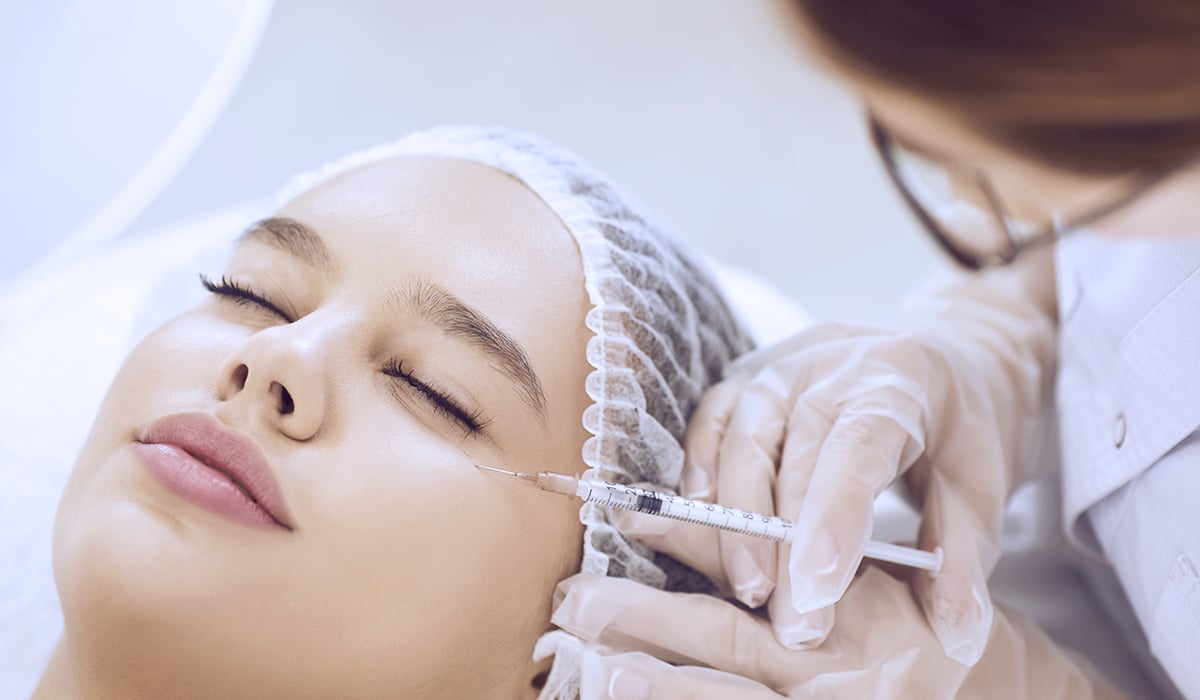If you’re experiencing common or premature signs of aging such as wrinkles, sagging skin, acne scars, or blemishes, PRP skin rejuvenation therapy may be just what you need to improve the look and health of your skin.
Here’s what you need to know about PRP treatment, and how to determine whether it’s right for you.
What Is PRP Skin Rejuvenation?
Platelet-rich plasma (PRP) skin rejuvenation is a non-surgical therapy designed to combat the appearance of wrinkles and improve a patient’s overall complexion with younger-looking skin.
How Does the Therapy Work?
Often referred to as a “vampire facial,” PRP treatment involves injections of a patient’s own platelet-rich plasma into desired areas to stimulate collagen production.
The process requires blood to be drawn from a patient and put through a centrifuge to separate the platelet-rich plasma. This is then reintroduced to the target area via microneedles to trigger a repair response forming collagen and elastin, and improve the overall appearance and texture of the skin.
What Are the Benefits of Treatment?
PRP treatment is considered a safe and non-invasive method of achieving smoother and younger-looking skin. It is regarded by healthcare and cosmetic professionals as a great way to address many of the issues associated with visibly aging skin.
In addition to reducing fine lines and wrinkles, treatment also results in tighter, firmer, and healthier skin all around—improving tone and texture while diminishing acne scars, stretch marks, discoloration, and other blemishes.
Who Should Avoid Treatment?
PRP treatment is considered very safe for most people, but not recommended for patients with medical conditions affecting platelet production, as treatment won’t yield the desired results.
The therapy is also not advised for those with Hepatitis C, HIV or AIDS, blood cancer or cancers of the skin in the target treatment area, or cardiovascular disease, which requires the use of blood thinners.
PRP skin rejuvenation is a non-surgical therapy designed to combat the appearance of wrinkles and improve a patient’s overall complexion with younger-looking skin.
What to Expect From Treatment
Prior to treatment, be sure to avoid alcoholic beverages for 24 hours, as well as anti-inflammatory and blood-thinning medications, as they can increase the chances of bruising.
Before your appointment, you’ll also be asked to refrain from using makeup, and to drink a bottle of water at least two hours before your session.
During treatment, patients will have a small amount of blood drawn from their arms. This is then processed and separated by a centrifuge, and the layer with a high concentration of platelets extracted. Your doctor injects the platelet-rich plasma into the desired area using a syringe or microneedling device.
Upon penetration, collagen begins to heal the skin, and patients should notice it tightening almost immediately. The procedure lasts about 45 minutes to an hour, and there’s little to no downtime required afterward.
The skin’s appearance and texture continues to improve for several weeks following treatment, and patients are often advised to undergo three or more sessions for results lasting up to 18 months.
What Are the Potential Risks?
While the procedure is fairly safe, patients may experience pain, bruising, and swelling—which usually disappears in a few days. There is also a small risk of infection if blood is mishandled.
Be sure to only seek treatment from a qualified healthcare or dermatological professional.
If you’re interested in addressing some problematic areas of the face, hands, or body experiencing signs of aging, schedule a consultation with Long Island surgeon Dr. Anthony Buglino today. For examples of Dr. Buglino’s work, check out his Instagram!




